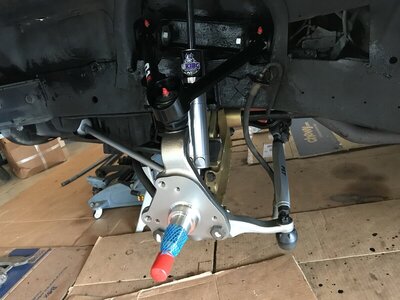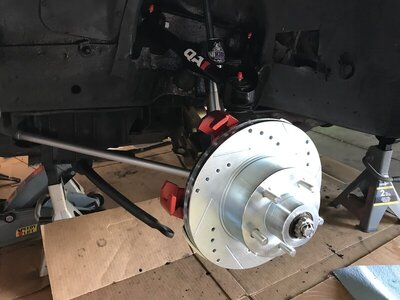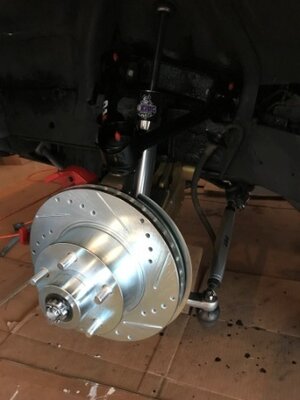I installed the seal with the long rubber lip pointed out away from the rotor, as most suggested. Here is the finished product. Hopefully I can get my calipers on this weekend, get the brakes bled, front end aligned and finally get this car back on the road. Its been down since early June

Here is a pic of the finished product. These are the 73 and later rotors with the larger diameter bearings. I went with the 11" because I could not find the "pin style" caliper mounting brackets for 11.75 inch anywhere.
View attachment 996131 View attachment 996132 View attachment 996133



















